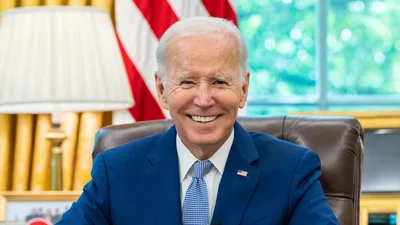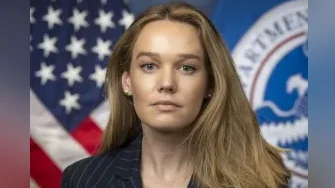The Congressional Record is a unique source of public documentation. It started in 1873, documenting nearly all the major and minor policies being discussed and debated.
“LABOR-HHS-EDUCATION SPENDING BILL FOR FY98” mentioning the U.S. Dept of State was published in the Senate section on pages S9195-S9196 on Sept. 11, 1997.
The publication is reproduced in full below:
LABOR-HHS-EDUCATION SPENDING BILL FOR FY98
Mr. BINGAMAN. Mr. President, the fiscal year 1998 Labor-HHS-Education appropriations bill that was passed overwhelmingly by the Senate today contains several education and health provisions that I feel are especially important and have worked hard on to help improve the lives of people in New Mexico and nationwide.
The key health and education provisions include a plan to move control over the proposed new math and reading tests to an independent board, increased funding for education technology and technology training for teachers, first-time funding to help low-income students participate in the rigorous and cost saving academic program known as Advanced Placement, and funding for a Boarder Health Commission that I helped enact in 1994.
It is especially important to note that the United States Senate today approved $1 million in funding to implement the United States-
Mexico Border Health Commission. The Commission, which has long been one of my priorities, is designed to help improve public health along the United States-Mexico border. I requested that the funds be included in the 1998 spending bill in a letter to Senate appropriators earlier in the year.
I led the fight to fund the Commission because I believe that we can't wait any longer to begin addressing the serious health problems along the border. They greatly affect people in nearby communities and in New Mexico. What's alarming is that many of these health problems--
such as malaria and tuberculosis--can affect people nationwide. This appropriation represents the first time Federal funds have been earmarked specifically for implementation of the commission.
The funds would go to the commission to begin a comprehensive border health needs assessment followed by a coordinated medical response to border health problems. Each United States-border State would receive two federally appointed commissioners who would work with Mexico to design and coordinate programs to improve health, water resources, sewage treatment, vector control and air quality along the border. Because of the Senate's move today, we are inching closer to being able to directing medical help to our ailing border region.
The Senate has also now approved funding for several key education initiatives that have been some of my top priorities in this Congress.
Perhaps most notable is that the Senate approved $30 million to train teachers in the use of technology in the classroom. The funding will be used to implement the Technology for Teachers Act, new legislation that I authored earlier this year.
There is a tremendous effort underway to put computers in classrooms and hook schools across American into the Internet. But until now, the primary focus has been on obtaining equipment--not on training teachers to use it. We can't simply install a computer in the classroom and expect it to revolutionize education all by itself. These new resources represent the first time Federal funds have been set aside specifically for training new and current teachers in the use of education technology.
As a founding member of the Senate Education Technology Workforce, I am also proud that the Senate voted to double the funding for the Technology Literacy Challenge Fund, created by my 1994 Technology for Education Act. The fund would jump to $425 million in 1998 from $200 million in 1997. New Mexico's State Department of Education this year received $1.7 million from the Technology Literacy Challenge Fund, and awarded grants to 26 communities across the State. The 1998 funding would boost New Mexico's share to $3.55 million.
And finally, the Senate also approved $3 million in funding to increase the number of low-income students who participate in the rigorous Advanced Placement [AP] program in schools in New Mexico and across the country. I secured this funding in the 1998 Labor-HHS appropriations bill in order to broaden the reach of AP classes to all students--not just to those who attend more affluent schools or have definite plans to attend college. By promoting AP, we're promoting high-standards education in our schools without creating new Federal programs.
These are just a few of the most important elements of a bill that on the whole is very strong, I believe. However, I must note one part of the legislation that we are sending into conference with the House of Representatives, which is the Gorton amendment.
As part of this spending bill, the Senate narrowly approved--49 to 51--an amendment by Senator Gorton that would convert billions of dollars in critical Federal education dollars into unrestricted block grants that school districts could spend with few restrictions and little accountability. For reasons I would like to describe here, I strongly oppose the amendment and will push for its elimination from the final version of the 1998 Labor-HHS appropriations measure.
In essence, this amendment would eliminate much of the U.S. Department of Education--a radical and misguided effort that I had thought was abandoned in the face of tremendous public opposition over the last few years.
Specifically, this amendment block grants to local districts--not states--roughly $5.5 billion in annual funding for Federal education programs. The eliminated programs would include:
Funding for the new voluntary national tests for reading and math, which would help so many parents keep their schools accountable for preparing their students for a high-tech world;
Title 1, the roughly $7 billion program to help poor children improve their reading and math skills in the early grades;
The $425 million Technology for Education Act, which is already providing $1.7 million in education technology funding to 26 grantees around the state, and would rise to $3.5 million next year;
The $50 million Charter Schools program, which helps foster the creation of more new, independent public schools like the five that are up and running in New Mexico;
Goals 2000, which has provided millions of dollars to New Mexico as part of its effort to raise academic standards and achievement;
The School-to-Work Opportunities Act, which has given both local and statewide implementation grants to help improve training for students going straight into the workforce from high school;
Safe and Drug Free Schools, a program that sends Federal funds to the States and schools most affected by school violence in order to make them more orderly;
Teacher training funds called the Eisenhower program that are used in New Mexico to help upgrade the preparation of teachers in our classrooms; and
Bilingual and immigrant education programs, which also provide much-
needed support for communities with large numbers of limited English proficient students.
In effect, this would create an unmonitored windfall for school districts that could be used for nearly any purpose--conceivably even raising administrative salaries, or building swimming pools and tennis courts. There would be no oversight or accountability--in fact, all of the limits on administrative costs and accountability measures that rely on State oversight and are already in Federal law would be eliminated by the amendment.
The Gorton amendment would also fully by-pass State education agencies that in New Mexico help coordinate and monitor programs. Some people think block-granting education funds might give local school districts more control or more funding. The reality is that if we block grant these programs and bypass the our entire State education network, we actually put a huge administrative burden on school districts that very few will be able to handle. And in fact, only about 6 percent of Federal funding is taken off the top by States for administrative and technical assistance. It simply isn't cost-efficient for small districts to provide the specialized training or diverse course offerings that can be provided economically at a state and regional level.
It's also entirely unclear how New Mexico would fare under such an arrangement--there is no real way of telling from the amendment, which proposes an entirely untried approach that has never really been debated before. Funding levels would basically be determined by having each individual district conduct a self-reported census on its own of all the school-aged children in the district, and then weighting each district's funding according to each State's average per capita income level. However it's not too hard to guess that we won't do nearly as well as some may think, since current formulas already awarding money directly to districts based on individual community need would be scrapped--and many communities would be left to fend for themselves.
For these reasons, it is my hope that this ill-conceived amendment will be dropped in conference, and left out of the final bill that is made into law. If necessary, I would likely join my colleague Senator Dodd in filibustering the fiscal year 1998 appropriations bill if the Gorton amendment is kept in the final version.
____________________







